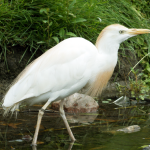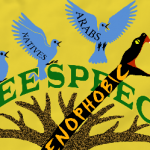Earlier this week, Anna Walther posted a quartet of devotional practices for naturalist(ic) pagans over at Humanistic Paganism. I found myself rather inspired, and wanted to share a few of my own.
I no longer engage much in formal ritual, beyond a few practices specific to my work with animal hides and bones. But I do endeavor to see the sacred in every moment and place, in the tiniest atom and the greatest mountain, the quietest pool and the strongest winds, in the roar of a space shuttle taking off and the hush of a breath. And I want to show my gratitude for the privilege of being in this world right now, for my little shining moment in the long, grand history of Earth.
So here’s my own quartet of devotional practices:
1. Be still: We’re always focused on moving, doing, thinking, being active; even when we’re outdoors, we’re hiking from place to place, getting our tents set up, cooking food, talking with each other around the fire. It’s not until we roll into our sleeping bags or cabin beds that we have any stillness, and often by then we’re too tired to do much other than roll over and snooze. The next time you’re outdoors, whether in deep wilderness or your neighborhood sidewalk, stop for a moment. Check in with each of your senses. What do you see and hear? What do you smell in the air, and what can you reach out to touch with your hands? What’s beneath your feet and over your head? What in your immediate environment could you taste, have you tasted? Be mindful of that place in that moment, and let all else fall aside.
2. Restore the land: I’ve frequently extolled the virtues of volunteering and donations as offerings. Donations aren’t always possible depending on your budget, but a bit of time can go a long way. Contact your local environmental group(s) and see what sort of help they need. They might be organizing people to remove invasive species and plant native ones, or staff an informational table at an event. Many even need help with administrative work like filing papers and organizing the office. Even if you aren’t able to do heavy physical labor, there’s likely something you can do to help.
3. Draw a picture: It doesn’t have to be a good picture; this isn’t about amazing artistic talent. Rather, take some time to really study a plant, animal, or other being of nature–or an entire landscape. Look at it in detail, and really get to know its colors, contours, highlights and shadows. Draw it to the best of your ability, trying to take home a bit of its life on your work. If you’re unable to draw, try another art form–a journal entry perhaps, or a bit of wordless song–whatever conveys that bit of nature for you.
4. Teach another: There are few things as powerful as sharing. Naturalist pagans and our ilk tend to be very enthusiastic about the world around us, and we love sharing anyway. But that sharing can be an act of devotion in and of itself. By helping others foster a sense of wonder and awe at nature, we help them to want to not only appreciate it but also protect and preserve it. Be aware, of course, of who your audience is and how receptive they may be. You’ll get better results by modeling curiosity than trying to force it upon others. Let them come to you.
What about you, dear readers? Do you have any practices to add to this and the original post?
















